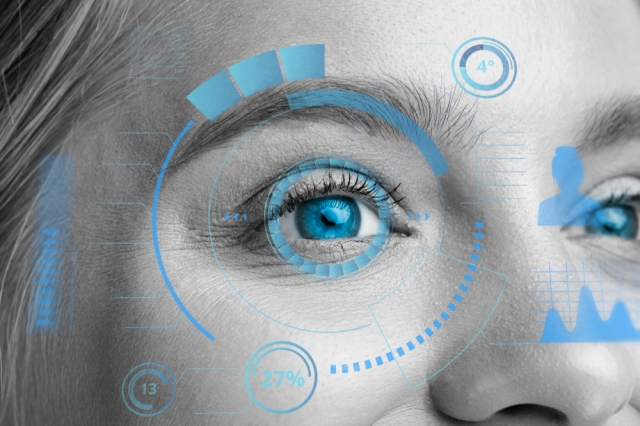In an era marked by technological innovation, wearable technology and artificial intelligence (AI) are revolutionizing the landscape of eye care accessibility for adults. This article explores the transformative role of wearable tech and AI in empowering individuals to take proactive measures to maintain their eye health. From smart contact lenses to AI-driven telemedicine platforms, these advancements are reshaping the way adults approach eye care, offering new opportunities for enhanced vision and early intervention.
The Integration of Wearable Technology in Eye Care
Wearable technology has transcended mere convenience to become a powerful tool in the realm of healthcare. Nowhere is this more evident than in the field of eye care, where wearable tech is revolutionizing how adults approach vision enhancement and maintenance. This section delves into the integration of wearable technology in eye care, exploring the transformative potential of smart contact lenses and wearable retinal imaging devices in empowering individuals to take control of their eye health.
Wearable Contact Lenses
Smart contact lenses represent a groundbreaking innovation in vision enhancement technology. Equipped with miniature sensors and microelectronics, these lenses offer augmented reality overlays, adjustable focus, and real-time data monitoring features. By seamlessly integrating with the wearer's natural vision, smart contact lenses provide personalized assistance and support in various tasks, from reading text to navigating unfamiliar environments.
Moreover, smart contact lenses have the potential to revolutionize the management of age-related vision changes, offering customizable solutions tailored to the individual's specific needs and preferences.
Wearable Retinal Imaging Devices
Another notable advancement in wearable eye care technology is the development of wearable retinal imaging devices. These compact and portable devices allow individuals to capture high-resolution images of their retinas conveniently and non-invasively.
By providing real-time insights into retinal health and detecting early signs of eye diseases, such as diabetic retinopathy and age-related macular degeneration (AMD), wearable retinal imaging devices empower individuals to monitor their eye health proactively. Additionally, these devices facilitate remote consultations with eye care professionals, enabling timely intervention and personalized treatment recommendations.
The Role of Artificial Intelligence in Eye Care Accessibility
AI-Powered Vision Enhancement Tools: Personalized Solutions for Visual Impairments
Artificial intelligence plays a pivotal role in enhancing eye care accessibility through the development of AI-powered vision enhancement tools. These innovative solutions leverage machine learning algorithms to analyze visual data, identify patterns, and adaptively adjust visual stimuli to accommodate individual preferences and visual impairments.
From contrast enhancement and image magnification to color correction and glare reduction, AI-driven vision enhancement tools offer personalized solutions tailored to the specific needs of individuals with visual impairments, empowering them to navigate their surroundings more independently and engage in daily activities with confidence.
AI-Driven Telemedicine Platforms
In addition to vision enhancement, artificial intelligence is transforming eye care accessibility through the development of AI-driven telemedicine platforms. These platforms utilize machine learning algorithms to analyze retinal images, detect signs of eye diseases, and provide early intervention recommendations remotely.
By enabling individuals to upload retinal images from wearable retinal imaging devices or standard retinal cameras, AI-driven telemedicine platforms empower adults to proactively monitor their eye health and receive timely guidance from eye care professionals. Moreover, these platforms facilitate seamless communication and collaboration between patients and providers, ensuring continuity of care and improving health outcomes.
LASIK Innovations: Advancing Vision Correction
While wearable technology and artificial intelligence are revolutionizing eye care accessibility, it's important not to overlook the significant advancements being made in surgical interventions, particularly LASIK (Laser-Assisted In Situ Keratomileusis).
LASIK surgery has long been regarded as a popular and effective option for correcting refractive errors, offering patients the opportunity to reduce or eliminate their dependence on glasses or contact lenses. In recent years, LASIK technology has undergone notable improvements, making the procedure safer, more precise, and more customizable than ever before.
Enhanced Precision with Femtosecond Laser Technology
One of the most significant advancements in LASIK surgery is the integration of femtosecond laser technology. This cutting-edge technology allows surgeons to create a precise corneal flap with unparalleled accuracy and consistency. By replacing traditional mechanical microkeratomes with femtosecond laser systems, LASIK procedures can achieve greater precision in flap creation, reducing the risk of flap-related complications and enhancing overall safety and predictability for patients undergoing surgery.
Customized Treatment Options with Wavefront-Guided LASIK
Another notable innovation in LASIK surgery is the implementation of wavefront-guided technology. This advanced diagnostic tool enables surgeons to create highly personalized treatment plans tailored to each patient's unique visual aberrations.
By analyzing the entire optical pathway of the eye and identifying subtle irregularities in the cornea, wavefront-guided LASIK offers superior outcomes in terms of visual acuity, contrast sensitivity, and night vision. Additionally, wavefront-guided LASIK has been shown to reduce the occurrence of glare, halos, and other visual disturbances, resulting in improved patient satisfaction and quality of life following surgery.
Paving the Way for Enhanced Eye Care Accessibility
In conclusion, wearable technology and artificial intelligence are playing a transformative role in enhancing eye care accessibility for adults. From smart contact lenses and wearable retinal imaging devices to AI-driven vision enhancement tools and telemedicine platforms, these advancements offer new opportunities for individuals to take proactive measures in maintaining their eye health.
By leveraging the power of technology, adults can empower themselves to monitor their vision, detect early signs of eye diseases, and seek timely intervention when necessary, ultimately leading to improved outcomes and enhanced quality of life. As wearable tech and AI continue to evolve, the future of eye care holds promise for even greater accessibility, innovation, and empowerment for individuals of all ages.






